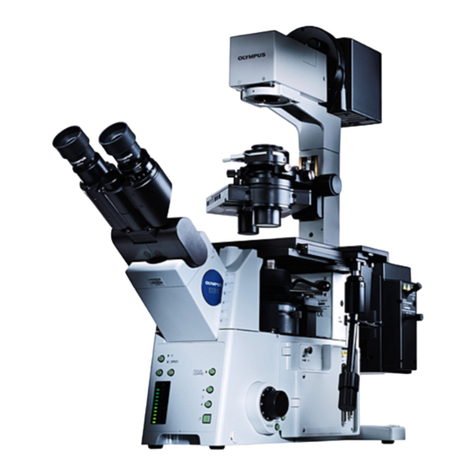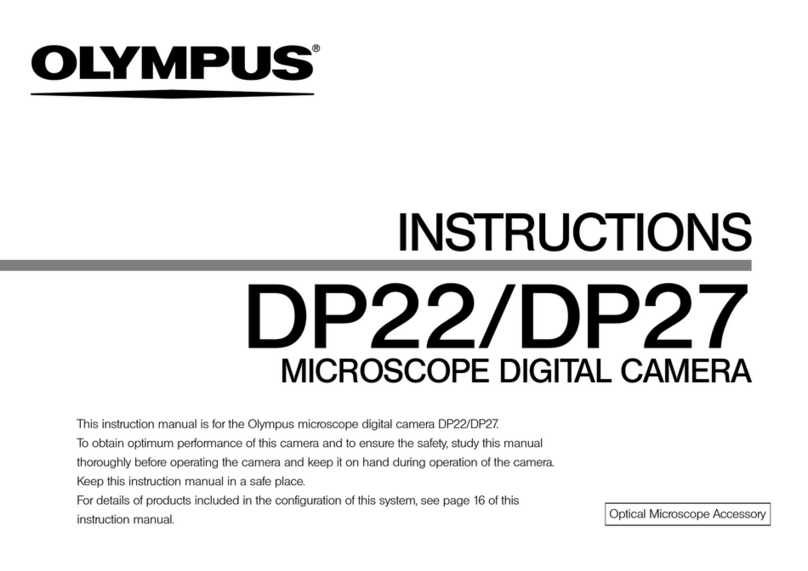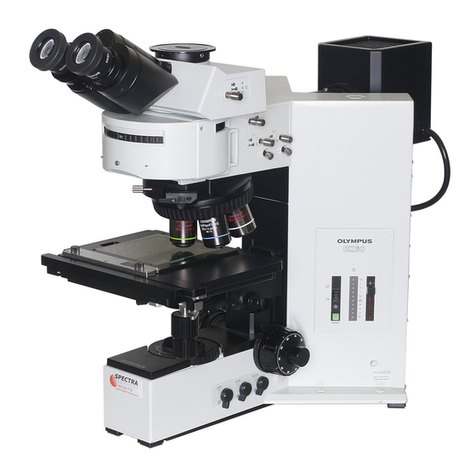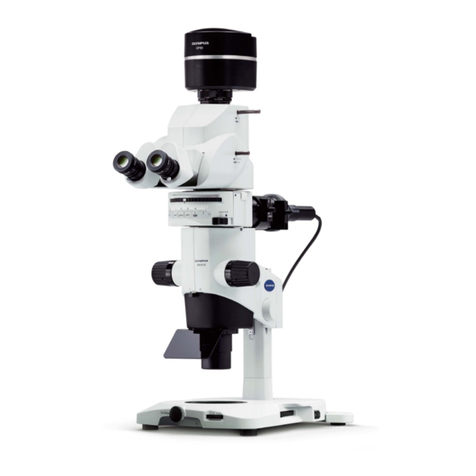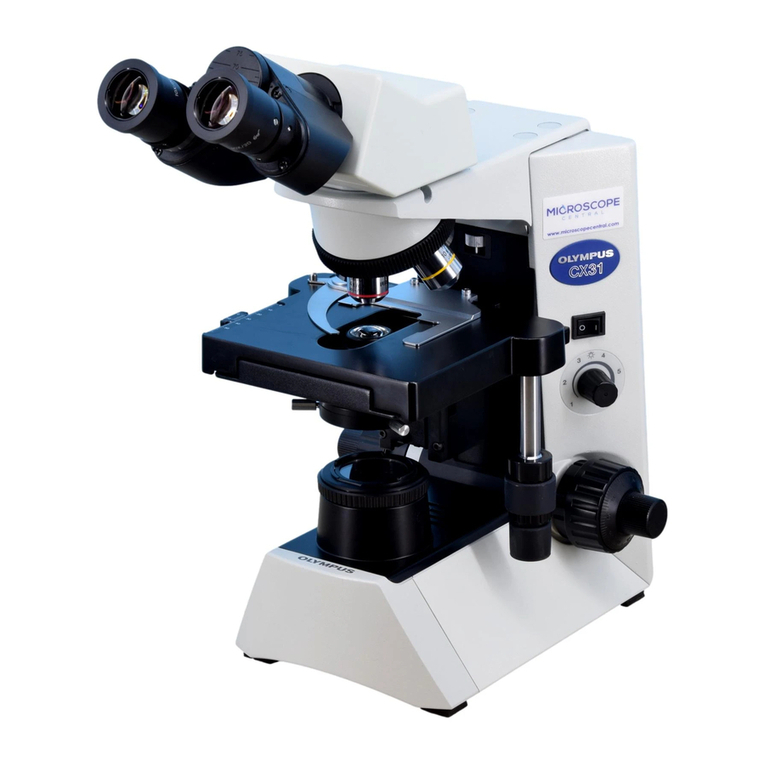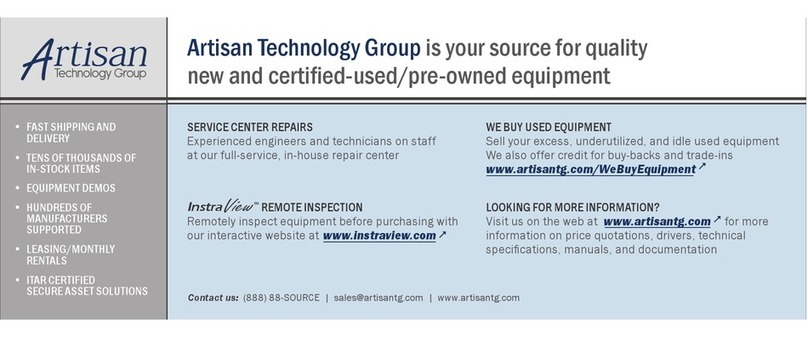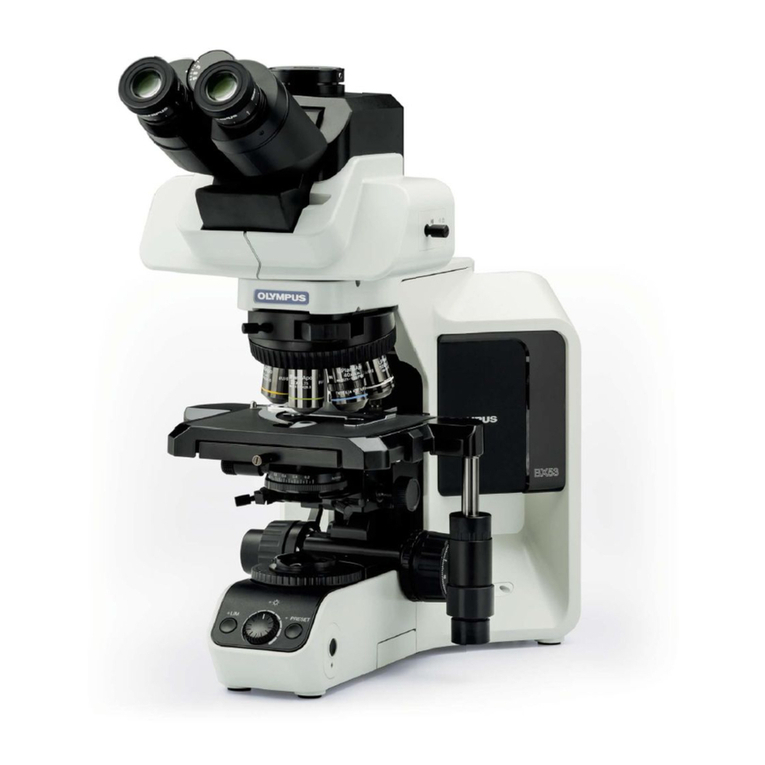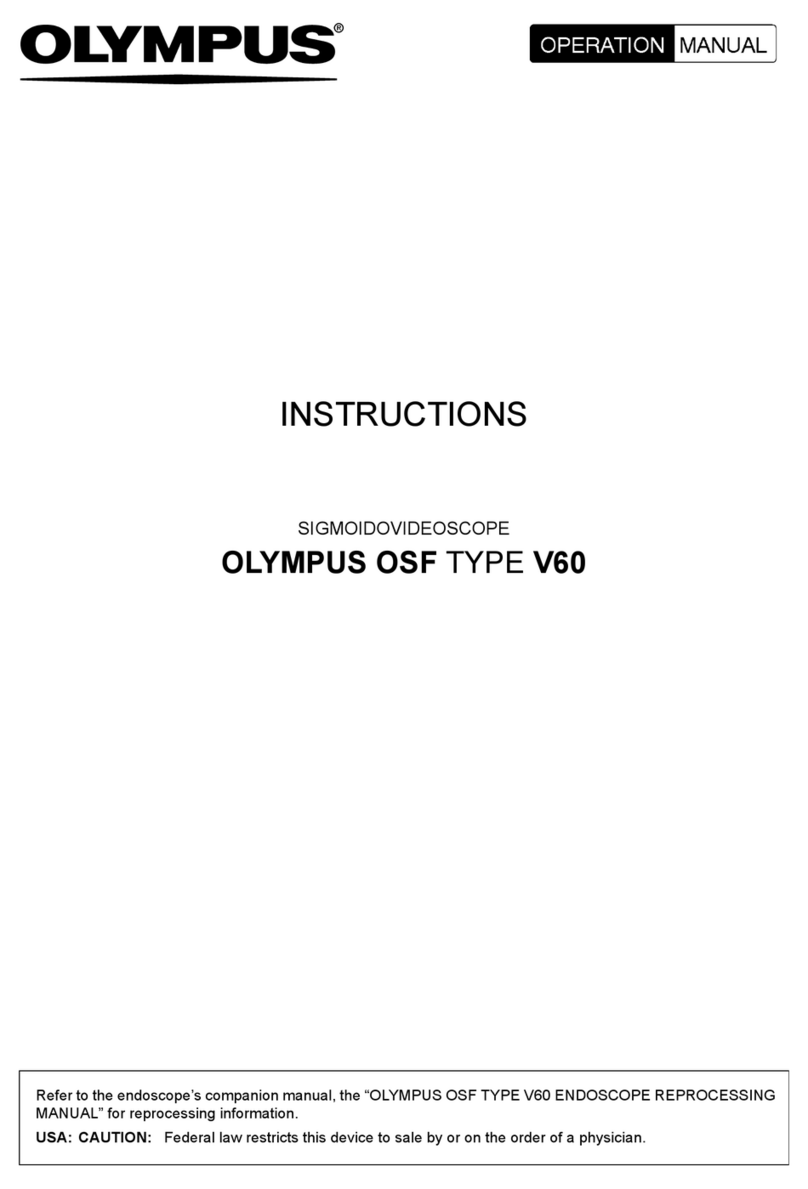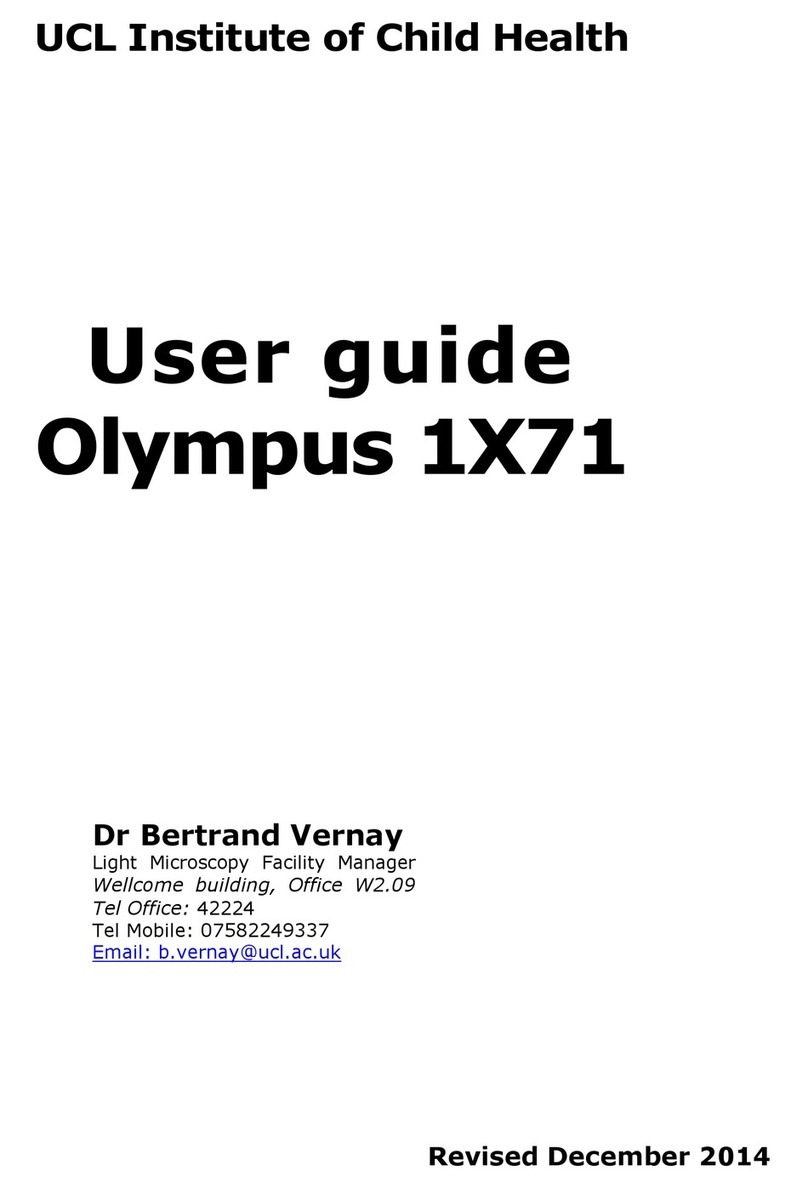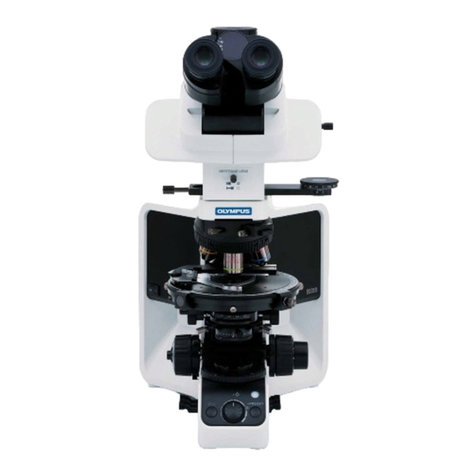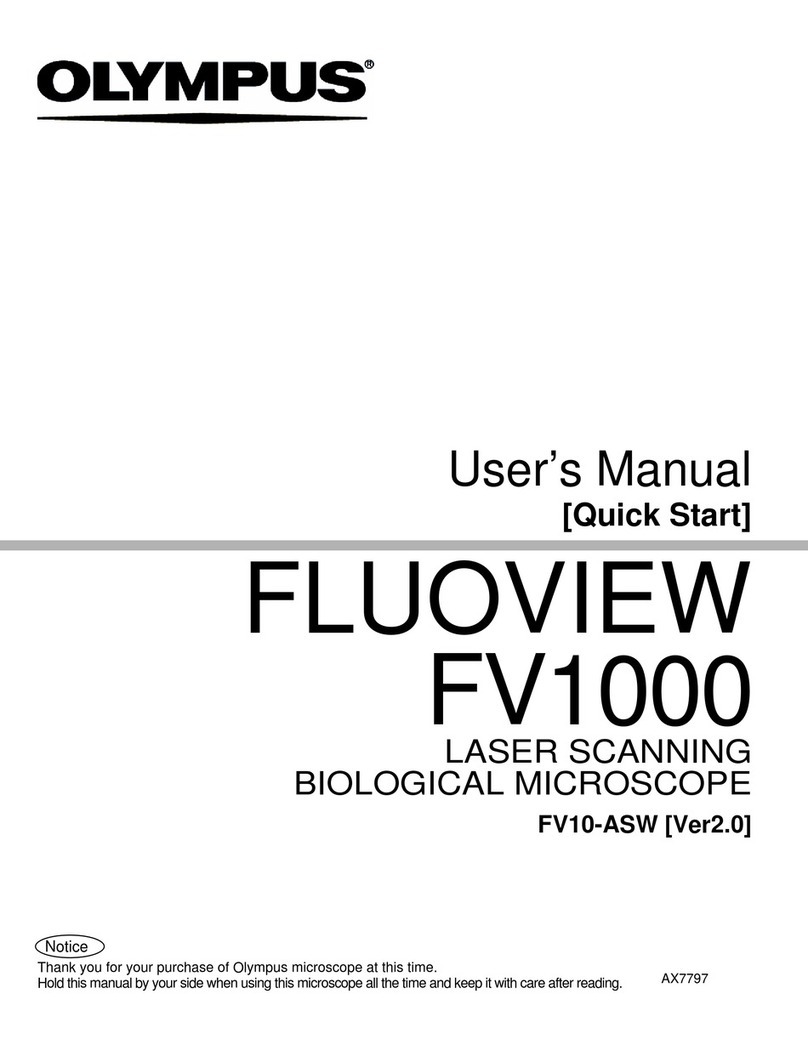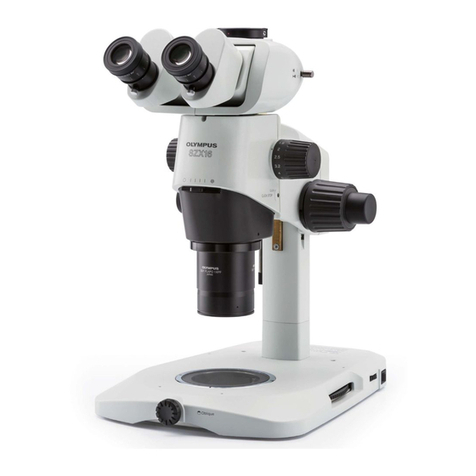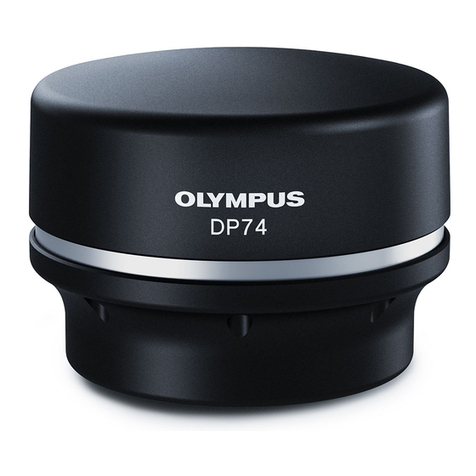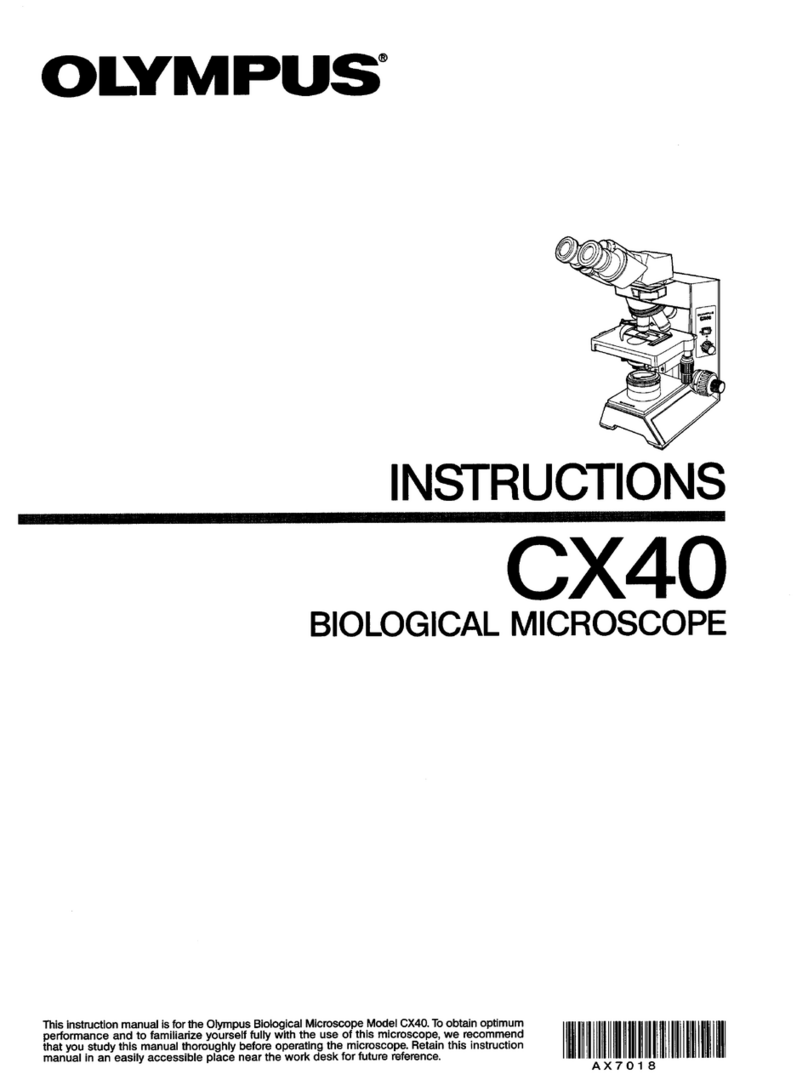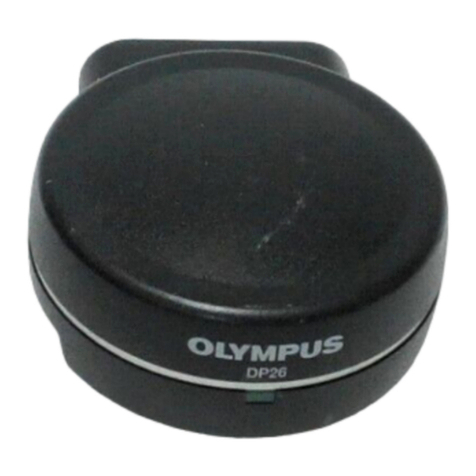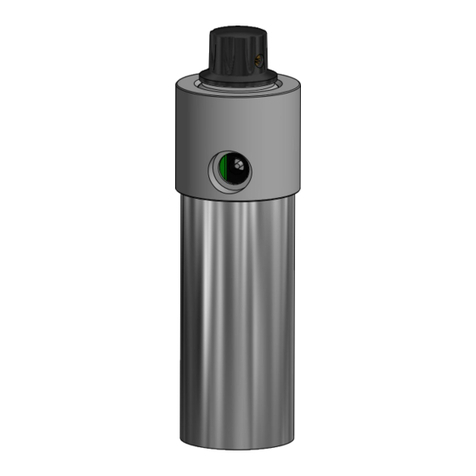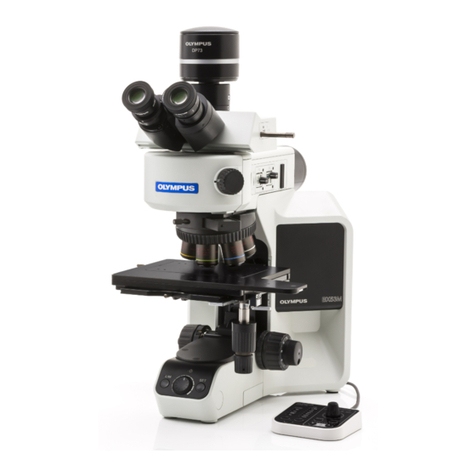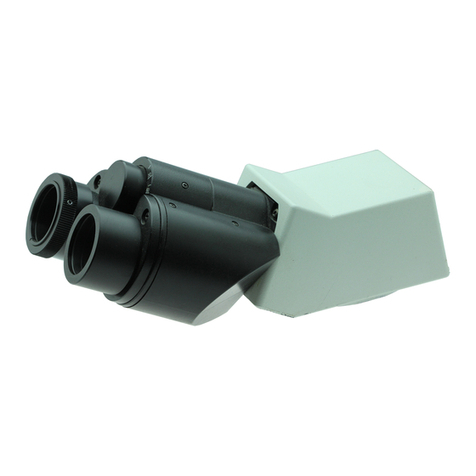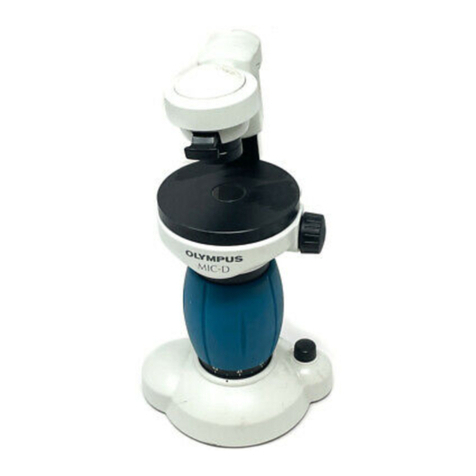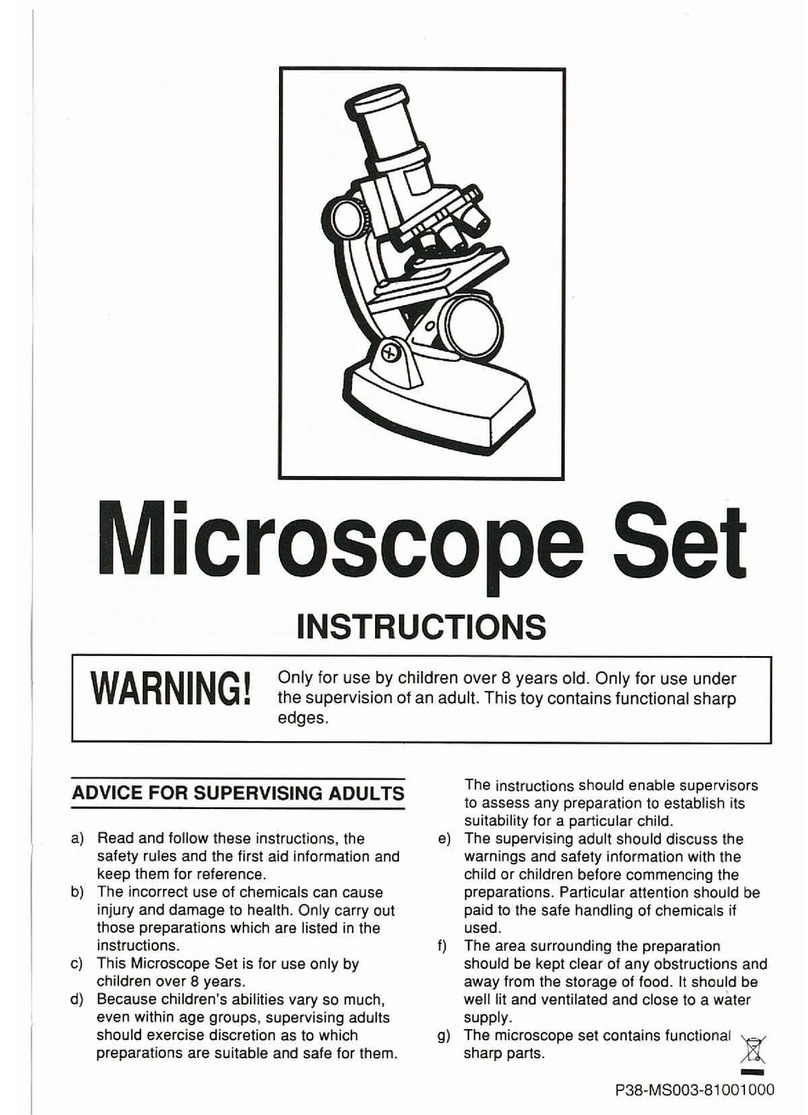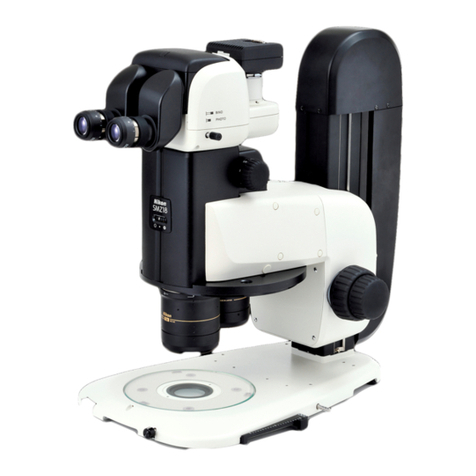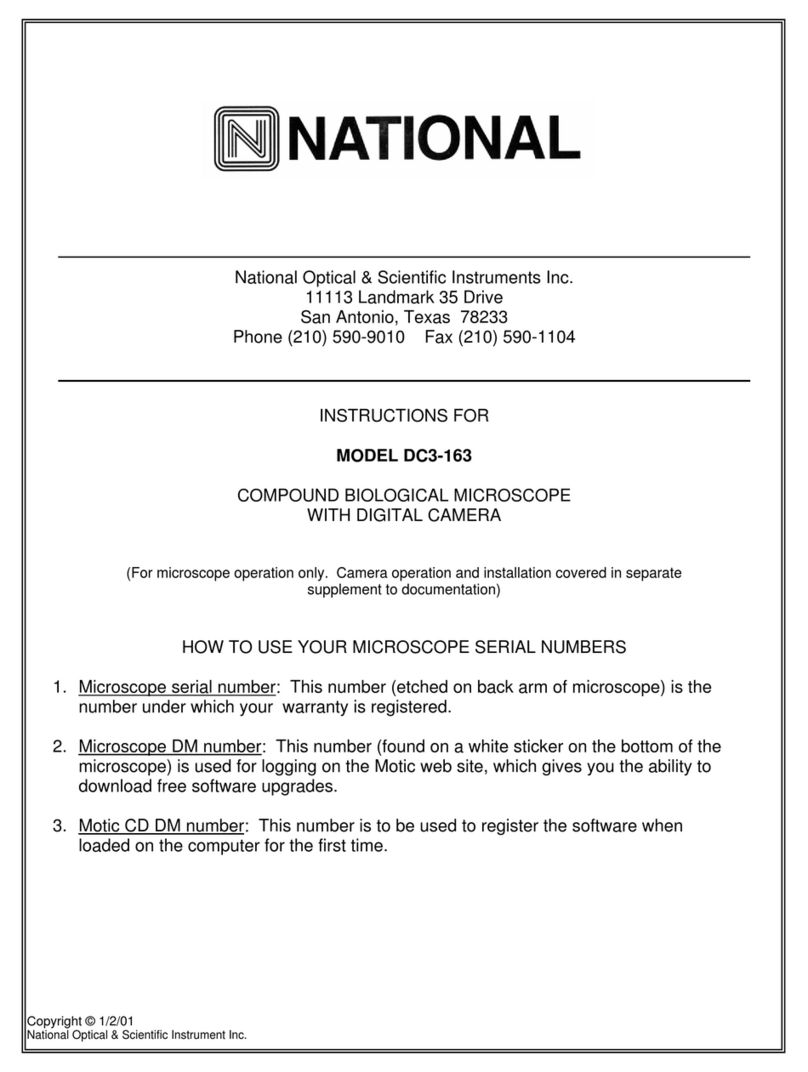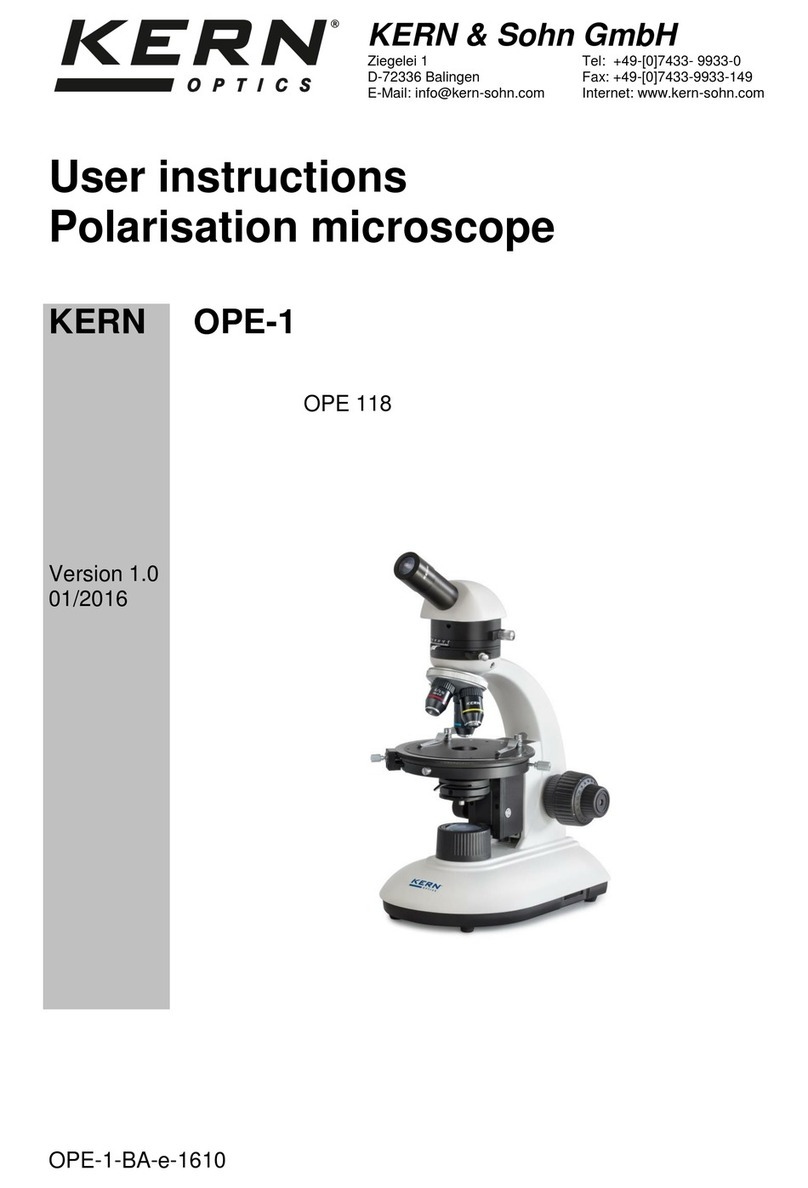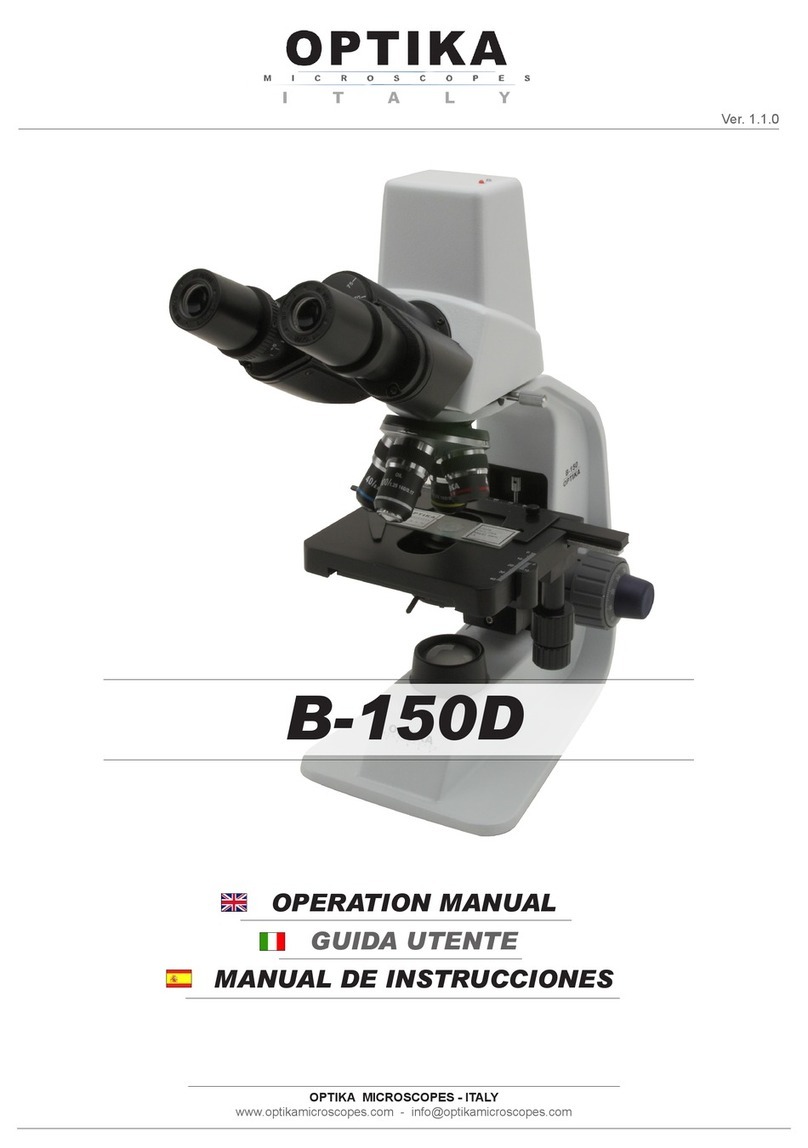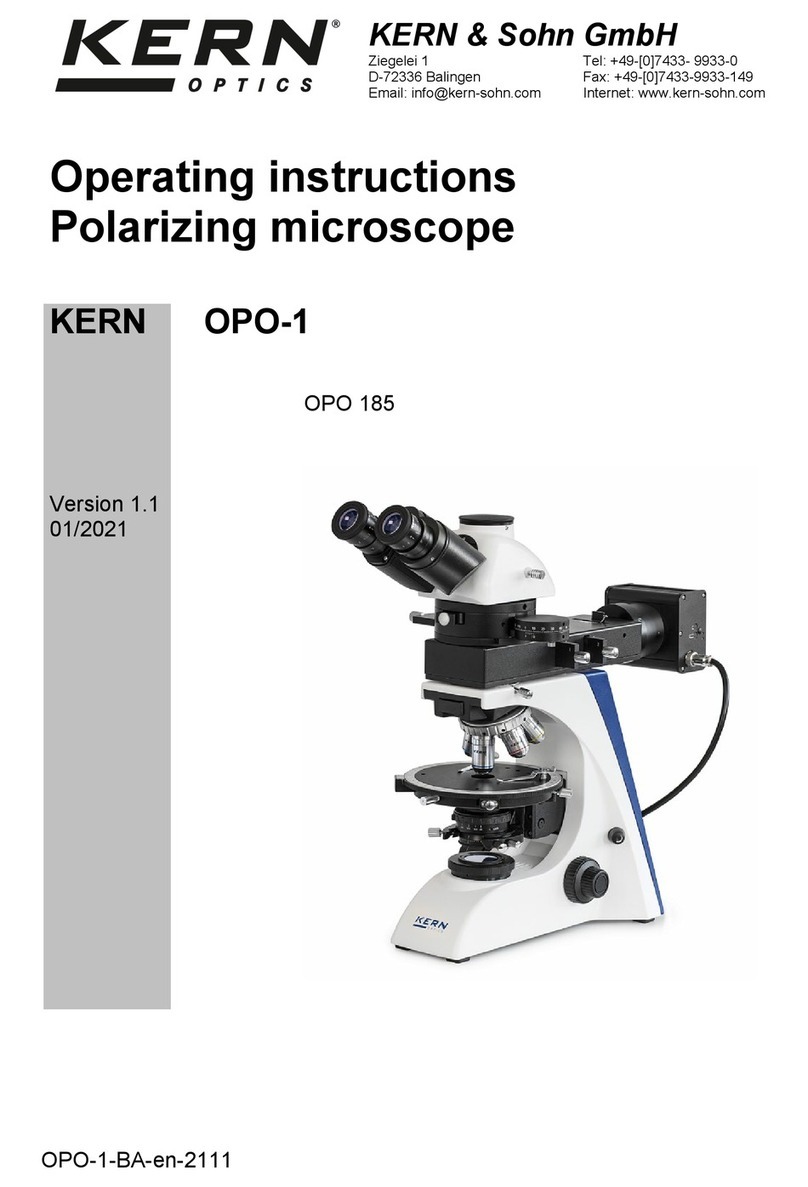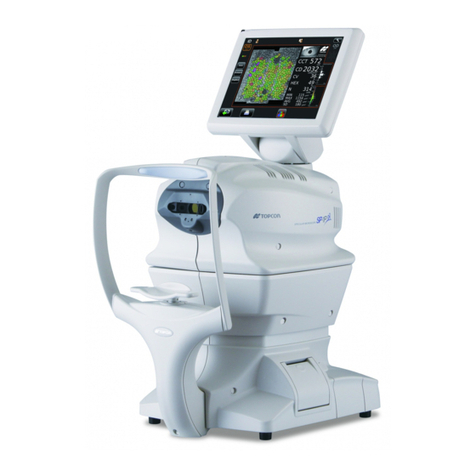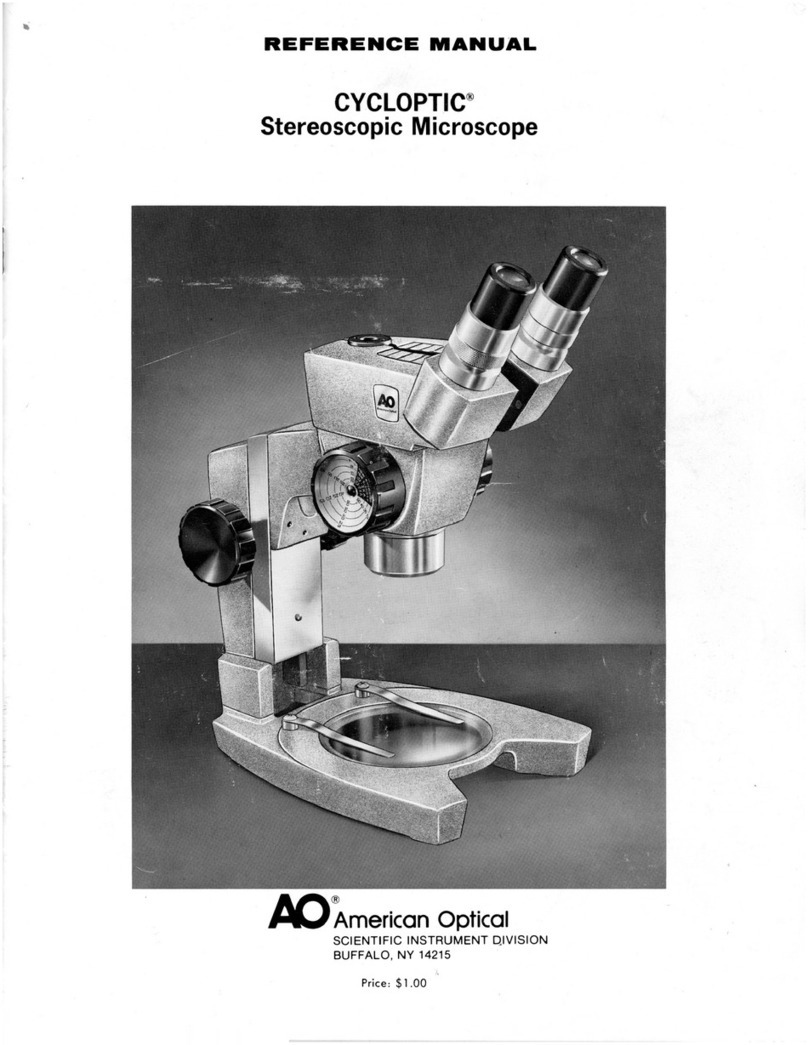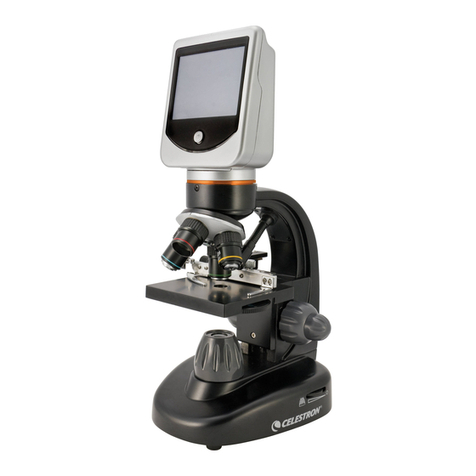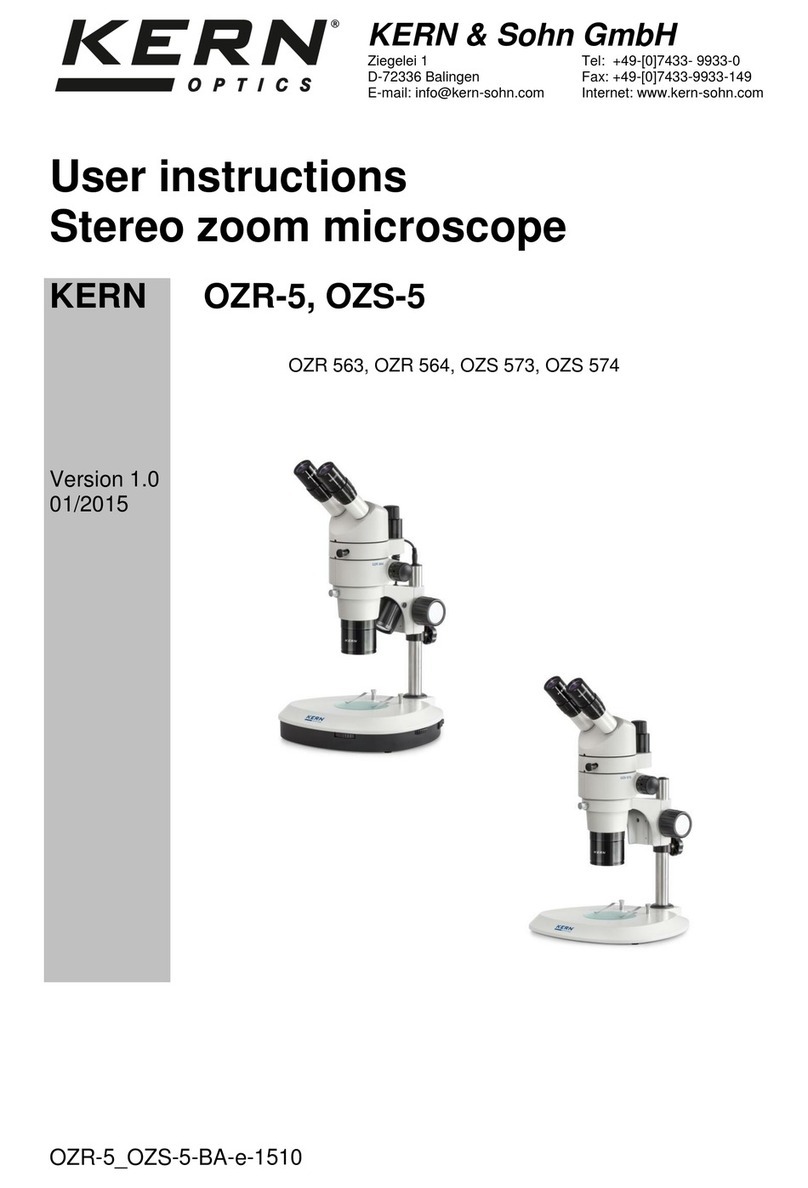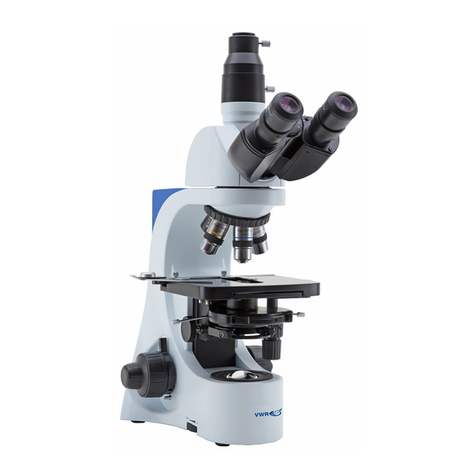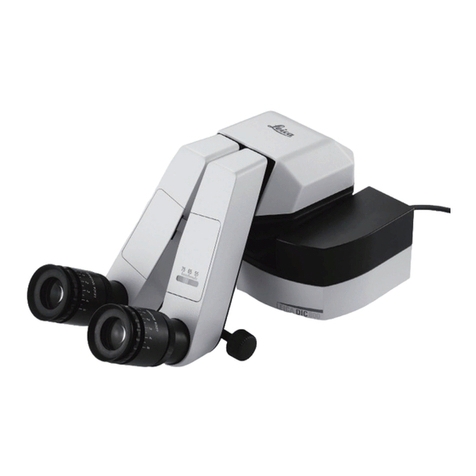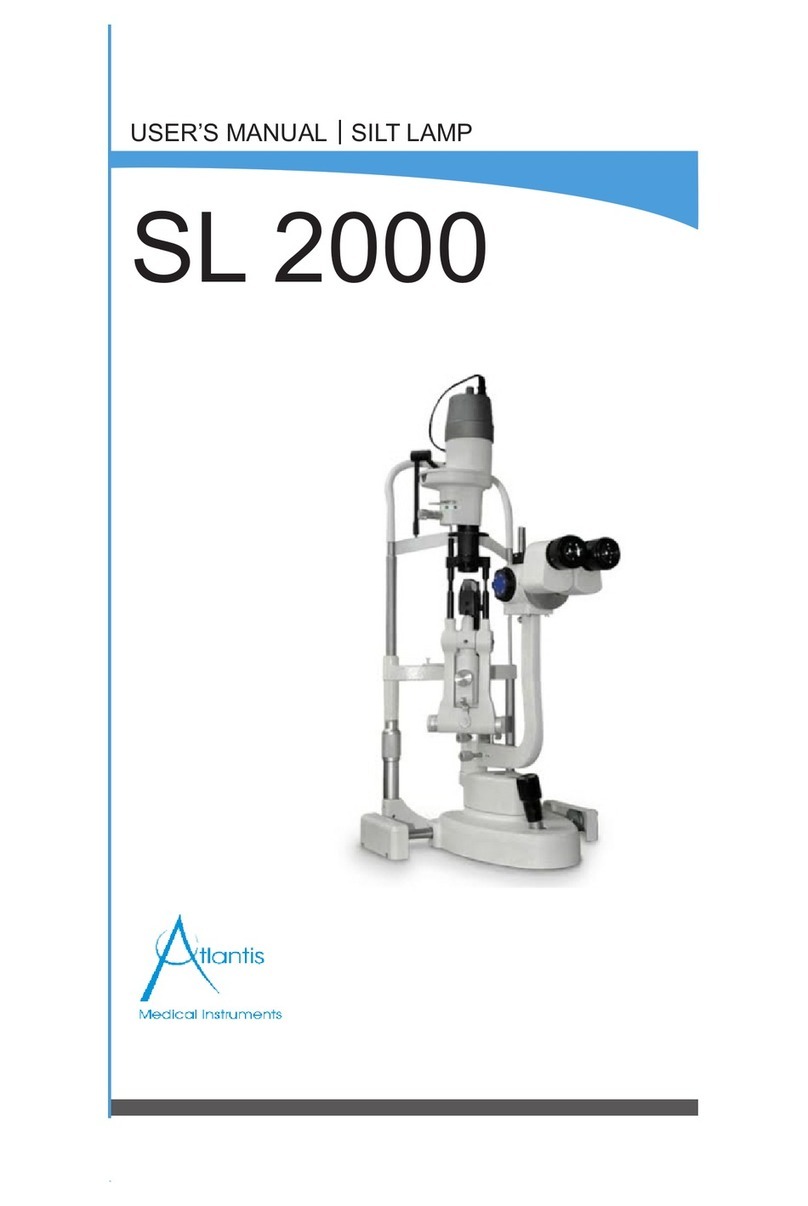
CK40-TB I B. INSPECTION STANDARD
c-
1. Inspection items and methods
(f- ?
P
Part Item Standard Method
H unit Interpupillary 50 mm to 76 mm In the observation state, insert a thin sheet of paper
Binocular distance with graduations at the eyepoint position and measure
ube adjustment the interpupillary distance.
ection) range
Interpupillary 1000 - 2000 g Put a string on the sleeve and measure the working
distance (9800 mN - 19600 mN) force to actuate the interpupillary distance using a
working force tension gauge.
Revolving axis 0.2 mm or less Using the standard eyepiece (KNO048 with Adapter-l)
center and a 4X or 10X objective, observe a specimen whose
center can be identified (ex. concentric circles) on the
stage.
Taking the right sleeve asthe reference, match the
specimen center and the visual field center, open and
close the interpupillary distance to read the
displacement between the specimen center and the
visual field center in the right sleeveusing the reticle
scale (1 graduation=O.l mm) of the KNO048.
Left/right
optical axis On image surface: Using the standard eyepiece (KNO048 with Adapter-l)
0.2 mm or less in vertical and a 4X or 10X objective, observe a specimen whose
direction center can be identified (ex. concentric circles) on the
0.2 mm or less in outward stage.
direction Taking the right sleeve asthe reference, match the
0.4 mm or less in inward specimen center and the visual field center and read
direction the displacement between the specimen center and the
visual field center in the left sleeveusing the reticle
scale (1 graduation=O.l mm) of the KNO048.
Absolute optical 0.1 mm or less on the Combining the standard eyepiece (RN0048 with
axis (right image surface Adapter-l), a microscope stand (product), the standard
sleeveonly) objective (KNOO15), read the displacement between the
specimen center and the visual field center in the right
sleeveusing the reticle scale (1 graduation=O.l mm) of
the RN0048 (with adapter-l).
Exit pupil
center Within 20% of objective’s Combining the centering telescope (KNOO29), a 4X or
exit pupil diameter 10X objective, and a microscope stand (product), read
the displacement between the exit pupil center of the
objective and the cross hairs center of centering
telescope.
Left/right
parfocality
difference
0.1 mm or less Combine the standard eyepiece (KNOO48; with
Adapter-l), the focusing telescope @T-36), a
microscope stand (product), and the standard objective
(KNO016).
Operating the helicoid of the RN0048 (with Adapter-l)
separately in the left and right optical paths, focus on
the specimen in the RN0016 and read the parfocality
difference using the helicoid scale (1 graduation=O.l
mm) of the RN0048 (with Adapter-l).
B-i
